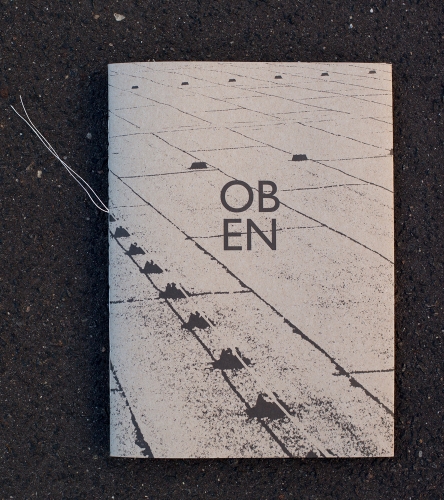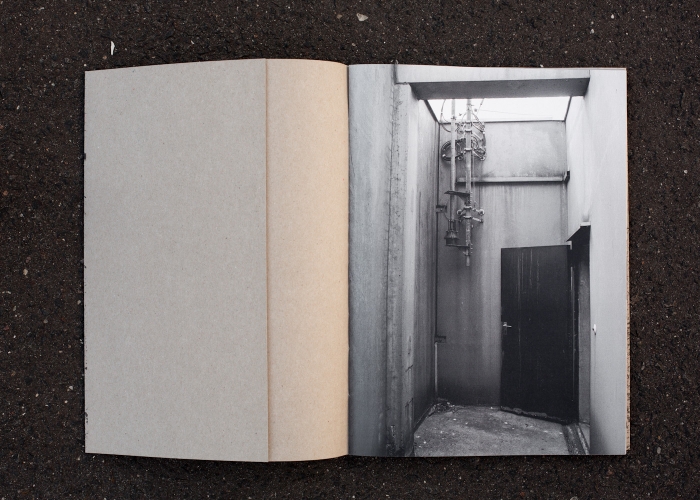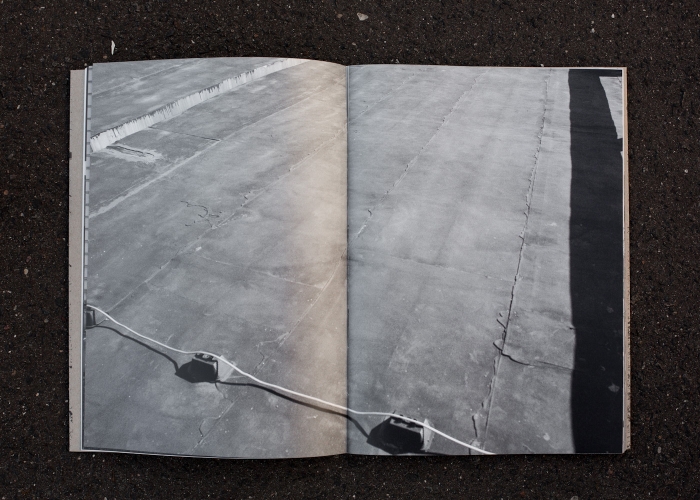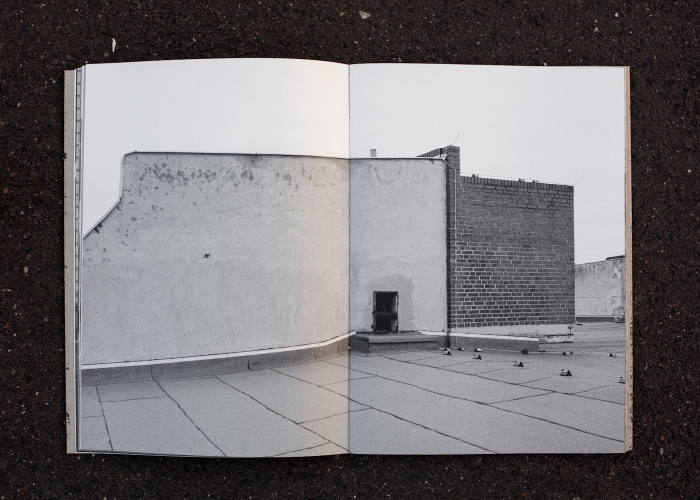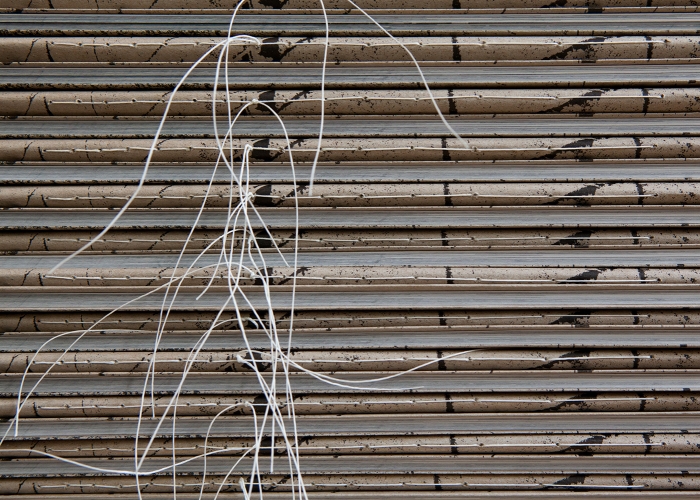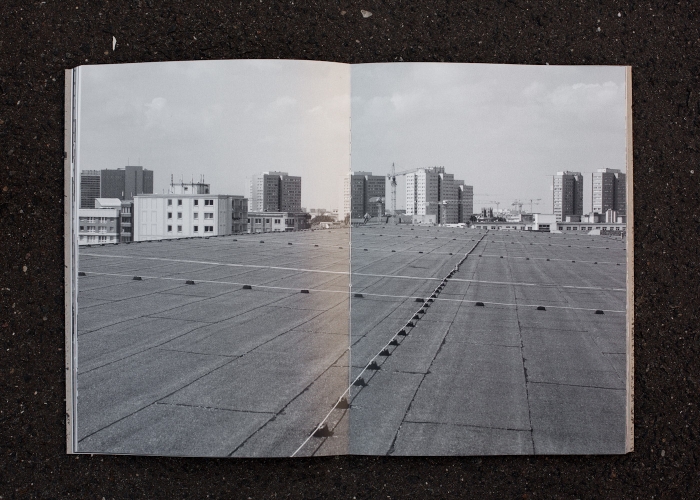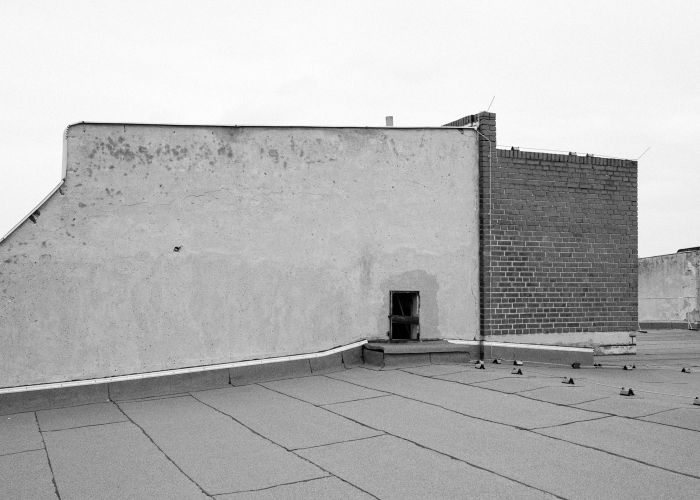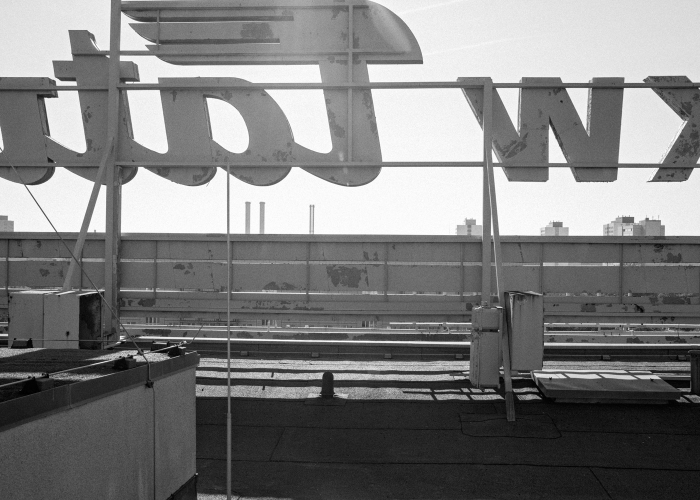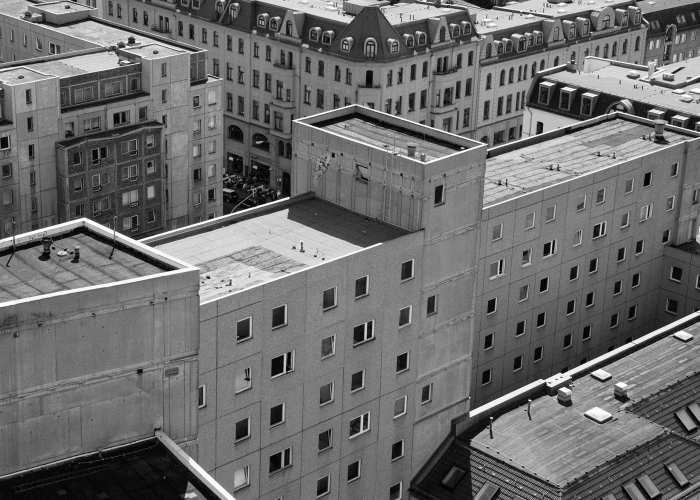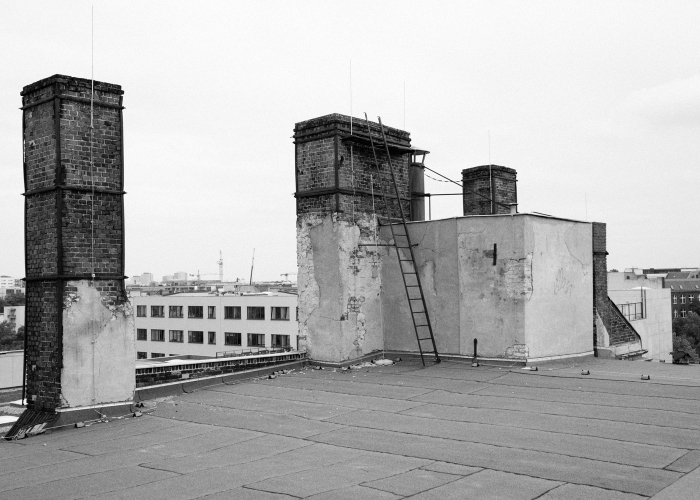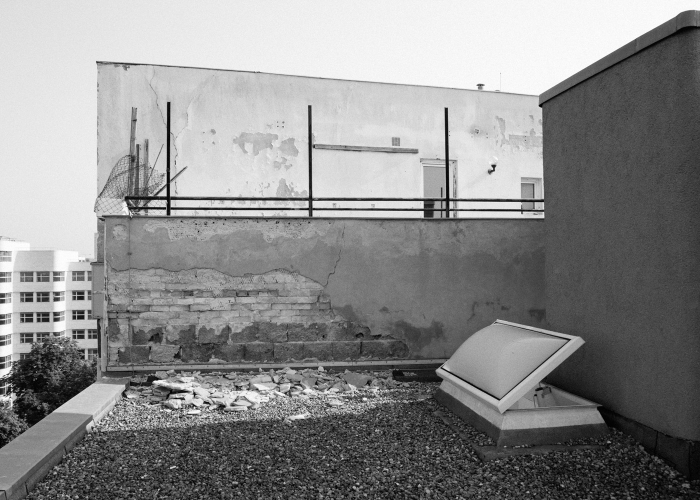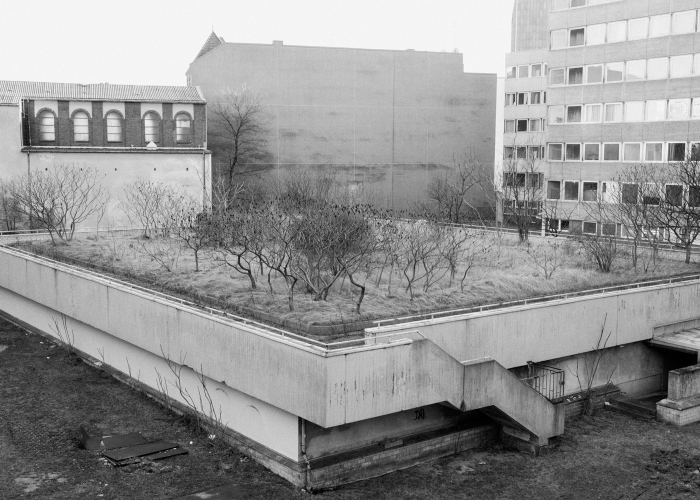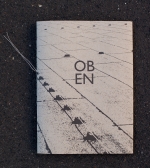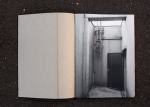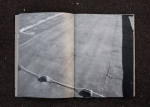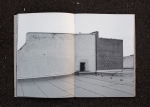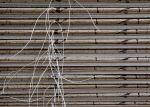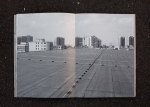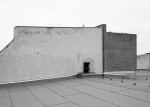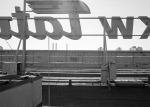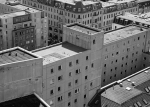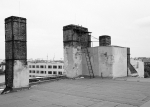Content: 21 photographs, a poem and a drawing
Type of paper: Lessebo Design Rough 150g/m² and 90g/m²
Printing: digital offset
Number of pages: 48
Cover: Muskat 160g/m², printed offset
Dimensions: 20,5cm x 28cm / 8,1 x 11 inch
Hand-bound with a special saddle stitch and finished with a hand-drawn map
Price: 32 EUR
The radiant modern city with its high-rises and greenways efficiently stripped of all human possibility (and, incidentally, all human community) was not just the sterile fantasia of post-war architects and town planners, but a well established ambition of utopian modernity. It was the devastation of the Second World War, especially in Britain, that made these experiments in a new urbanism possible, as to an arguably lesser extent it also did in mainland Europe, which of course needed extensive rebuilding as well, though perhaps more on the basis of necessity than ideological conviction. Seen in this light, the form of a city emerges as a product of its social and historical contexts, but in fact the urban experience cannot be so easily ordered, it remains stubbornly contingent, the product of innumerable human decisions and accidents. Diane Vincent’s recent book Oben seems intended to produce a new view of the city, one that is derived from occupying a position, as the title suggests, over or above its streets.
The first thing we might notice, however, is that even by assuming this height, the resulting view does not in any way pretend to clarify what we see. There is no wider pattern established by distance, which at any rate does not always look down, but mostly out, so instead it actually returns something of a messy, intimate disorder to the supposedly purified spaces of the modern city that is not entirely seen, but only glimpsed through various obstructions and accumulations. What these amount to, then, is actually the resistance of the city as a living space – that is, a space created for and by living communities that shape it in their image, rather than passively accepting whatever vision of the city as an ideal space that might be imposed on it (and on them). So, although Vincent’s pictures are devoid of people, their traces are everywhere, as a sort of positive, though often fleeting resistance. The city remains unnamed also, in that the pictures do not specifically locate it, being more concerned with the condition of ‘the city’ in general and a particular experience of it. But an obvious, though distantly visible, landmark places us in Berlin, and the history of this once divided city will inevitably shape our understanding of the work.
The pictures also establish a very distinct atmosphere though the astute use of tone, in which a remarkably even grey predominates and appears to suffuse everything. If the form of modern European life was fundamentally shaped by the trauma of war, then our contemporary equivalent must surely be the persistent economic upheavals of recent years; it is not hard to connect the visual tenor of Vincent’s pictures here to the emotional terrain of austerity. Pushed to the edge of our vision, if not quite forgotten, steel and glass corporate monoliths hover just beyond the far homelier architectural profusion that is at the heart of these pictures. Such anonymity couldn’t be further than the kind of space that Vincent depicts – and to a certain extent, creates – here, which is ostensibly non-functional, but has been adapted and essentially colonized, so despite an initially rather downbeat appearance, there pictures also bring us the subtle (and subversive) pleasure of the in-between places that we inevitably make our own.
Vincent’s attention to the roof spaces is not markedly rigorous. Instead, the pictures feel loose and spontaneous, attuned to what it might actually be like to experience these places and to while away a few hours there. As a result, the work is actually quite meditative; there is a sense of time suspended, at least temporarily, even as the hustle and clamour of the city surely goes on, just outside the frame. The structure of the book comes to reflect this as well, being a sort of reverie, with no clear narrative drive. But the connection between ‘marginal’ space and ‘marginal’ time is not coincidental either, as part of the resistance that these places seem to exemplify, at once inside and against the contemporary urban order. The book itself is an appropriately modest production, with a simple stitched binding, the thread for which has been left untrimmed, perhaps in a wry nod to her often unwieldy subject. On the whole then, while Oben is admittedly somewhat traditional in its means, it also manages to suggest the contours of our present moment in a very astute and satisfying way.

